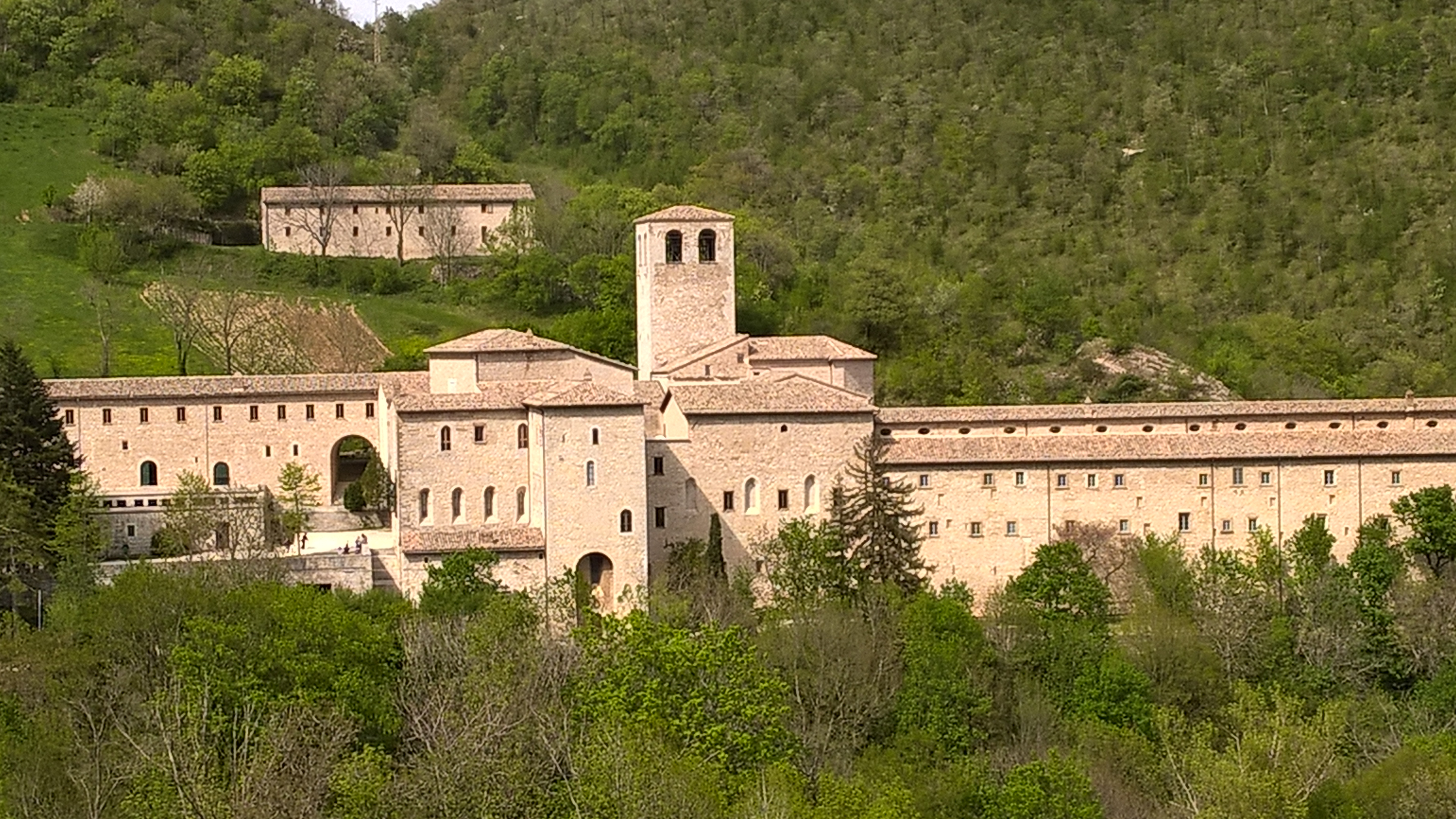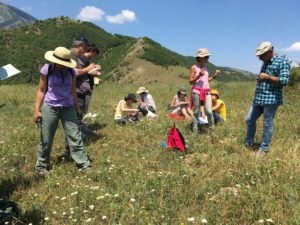Die Schönheit liegt im Auge des Betrachters
Beauty is in the eye of the beholder
Cosa è “il paesaggio”?
In accordo con la Convenzione europea sul paesaggio del Consiglio d’Europa (1) l’Accademia Europea per la Cultura del Paesaggio PETRARCA considera il paesaggio un insieme, quell’atmosfera particolare in cui confluiscono gli aspetti naturali e culturali di un territorio. La visione del paesaggio come insieme, consente anche di sperimentare la bellezza e la singolarità (2) dei paesaggi europei, la cui identità traspare nel momento in cui la loro storia viene considerata una biografia correlata all’uomo (3). Il paesaggio è la natura, così come è percepita dall’uomo attraverso i sensi. Ciò che l’uomo pensa di un paesaggio, influisce sulla maniera in cui lo percepisce e lo plasma. Il grado di sviluppo in cui si trova un paesaggio, esprime dunque il livello di consapevolezza degli uomini. Il paesaggio è un processo che avviene tra uomo e natura. Nella loro eterogeneità, i paesaggi europei esprimono le diverse condizioni naturali, ma anche il rapporto tra uomo e natura. Il paesaggio comprende ambienti naturali, fiumi, laghi, foreste e parchi, ma anche zone destinate all’agricoltura, alla silvicoltura, all’orticoltura. Fanno parte del paesaggio le reti stradali, le aree abitate e le città, le zone industriali e artigianali. L’Accademia Europea PETRARCA dedica un’attenzione particolare agli ambienti rurali, però si occupa anche di paesaggi urbani ed industriali, poiché in essi vive oltre l’ottanta percento della popolazione.
(da: Carta Costituzionale Accademia Europea per la cultura del paesaggio PETRARCA)

Monastery of Fonte Avellana, Marche, Italy
Karin Mecozzi 2018
What did young Lodolfo find in the ninth century as he looked for shelter underneath Mount Catria, animated only by his inmost yearning for contemplation and loneliness? Nowadays, it may be difficult to understand why he chose to settle down in that special place, together with a handful of peers from Gubbio. Was it an experience of silence in the ancient beech forest, the spring itself or maybe their longing for the Divine? The woods of the north/east Apennines were already well known places for spiritual retreat of the ancient Umbrian population.
The foundation of the first cells for the monks, in white chalkstone, started about the first millennium near the most important springs of the area. The church, a minor basilica, was consecrated at the end of the 12th century, dedicated to St. Andrew and the Holy Cross. The name of the monastery “Fonte Avellana” does not only depend on the natural abundance of hazelnut trees (Corylus avellana L.), but also on expressions associated to pre-Christian terminologies such as “auantia” (celtic, spring) and “Avernus” (latin, a place inhabited by ancestors). Fonte Avellana is situated in a natural amphitheater at the foot of Mount Catria (1701 m) and we can still see the well in the Botanical Garden, near the age-old yew tree.
Let us take a step back and observe the landscape of Fonte Avellana from a very far distance. From the Adriatic coast, we can see how the limestone massive of the Mount Catria rises in the hilly countryside. Between its northern face (Marche) and the southern one (Umbria) countless narrow valleys and canyons hide hermitages and minor sanctuaries, most of them ruins, entwined with thorns and brambles. Built on the Byzantine corridor, between Ravenna and Rome, many of these places were not only spiritual retreats but also hideouts both for pilgrims and outlaws. This might have been one of the reasons why St. Romuald (951-1027) arrived in this area in the first Millennium. For several years the founder of the Benedictine Camaldolese monastic order stayed in a cell of S. Maria di Sitria, a small abbey he built some miles from Fonte Avellana, fighting for the renewal and greater organization among the hermits living in northern and central Italy.
The ascendancy of Fonte Avellana began with the charismatic figure of St. Peter Damian (1007-1072) when he became the prior. Within a short period the monastery became a center of religious, cultural and social initiatives, even the most famous Dante Alighieri wrote a sonnet about Fonte Avellana in his Divine Comedy. The monastery and its properties were administered exemplarily, and until the end of the 14th century the domains of Fonte Avellana almost reached the Adriatic Sea. That was until the Vatican decided to send its own abbots owing to the decline of this unique approach to territorial and sustainable administration. After the closure under Napoleon and later under the unified Kingdom of Italy few monks kept living under Mount Catria. Only in the middle fifties of the nineteenth century were all buildings renovated and the monastery was opened to external visitors again.
In this particular scenario, offered by Mount Catria’s nature and within the monastery’s limestone walls do the outside and the inside become an impressive experience of the centuries old Camaldolese tradition. The monks live in community in the well-balanced rhythm of the Liturgy of the Hours, and at the same time they consider openness and hospitality as fundamental values of their choice of life and spirituality.
Visitors looking for time off for contemplation, private studying or enriching conversations are welcomed in specified parts of the buildings, either on their own or taking part in courses and seminars. Every year the community organizes or offers conferences, classes and courses about several inter-confessional topics, self-directed or held by external experts from all over Italy and Europe. There is a big refectory in the former cellars, which offers the traditional cuisine of the Marche region. A series of former monk cells were converted to comfortable rooms for the guests, there are also various conference halls and a vast library opened for visitors, as well as the beautiful scriptorium with its 13 windows aligned with the position of the sun. The historical library of the monks can be visited only on demand by researchers; it contains volumes and manuscripts from the 15th century until now. Liturgy of Hours and the Holy Mass are held in the Basilica or in the underground Crypt, visitors are always welcome.
The emblem of the Camaldolese shows two doves sipping from the same Chalice under a star. It expresses the encounter of the way of life of solitude against that of life in the religious community, according to the reform of St. Romuald. In Fonte Avellana, in the silence of its forests, we can sense this ancient yet contemporary commitment as a balm for our soul, in a world of sudden changes.
www.fonteavellana.it
————————————————————————————————————
Laurens Bockemühl, coordinator PETRARCA
Grown up in the bordering area between Switzerland, Germany and France I was fascinated by passing landscape limits. The immediate change of the landscapes while stepping over the border between two states is a really astonishing experience. There is something different appearing, a new and quite specific impression, although there are only a few meters separating both sides of the border. This character of the landscape can be experienced as a whole but it is very hard to keep hold of this wholeness in a conscious way or to describe it afterwards in words. How can I recognize the special character of the Sundgau in the southern Alsace (FR) by contrast to the neighbouring landscape at the edge of the Jura in Switzerland?
Since my youth I was very much interested in landscapes, their variety, variability, contrasts and their relationship with each other. I wanted to learn to discover and understand landscapes. Therefore I chose the geography for my studies. I wanted to study how a landscape develops taking into account the interplay of the climate with the movements in the earth, the rocks, the water cycle and the plant cover showing a permanent change during time. While the basic character of a landscape can be described quite well using the listed, rather immovable, well visible landscape elements, it is much more mysterious to discover the role of the animals and their meaning in a given landscape. What kind of environment did they create? Which facets of the landscape do they point out to us?
Back to the phenomenon described at the beginning when passing a border which was drawn in this landscape by people “artificially”. We are able to recognize nearly at once somehow the spirit of the culture living at a certain place. This experience is similar to the first impression we have when we meet somebody for the first time. The consciousness of this first image becomes blurred easily again the more we go into the landscape and the more we become a part of it. Actually only in a second step details can be described as parts of this image – starting out from the things the people living there created, how they are cultivating, building and acting in their environment.
In the last twenty years of my professional life, it was my task to describe and assess particularly the effects of infrastructure projects like streets, tracks, power stations and power lines etc. on nature and environment. Out of the forecast of the possible impacts on the environment, suggestions had to be made how to keep the landscape damages as low as possible.
This turns out quite well if we consider scientifically each component of nature separately. We can describe the effects of the road construction on the grounds, on the water balance, the vegetation and also increasingly well regarding the effects on habitats of animal species. However for me dealing with the landscape as a whole remains unsatisfactorily. It is a task fixed even by law in Germany to protect the peculiarity, variety and beauty of the landscape. Convincing instruments for this task still aren’t available. On the contrary the degradation of nature and landscapes are still progressing. How can we really protect the living development of the landscapes?
In the last decades the technical instruments to visualize and make thus conceivable landscape changes caused by human impacts had impressively increased. Unfortunately these had not led to really convincing methods to measure or qualify the impact on the landscape. In the end landscape quality remains reduced to a matter of taste: I like it or I don’t like it or I learn to like it the more I get used to it. It seems to me that we had to go deeper to be really capable to judge whether our interaction with the landscape is coherent, healthy and in complete connection to the living landscape or not.
In my opinion it is our task to develop our relationship to the landscape and our planning methods further so that we can find the criteria for our actions in the landscape in a creative way out of the deep experience of the special character of the place including his past, the geographical situation and the people living here. This kind of landscape design could lead us to a new landscape culture.
The ideal would be to gather everyone who’s linked to the place in a real participatory planning process. This process could be carried out in several steps. Firstly – and this seems to me undervalued in usual planning processes – everybody is trying to get in direct contact with the landscape, to observe and experience the special qualities of the given place and then share the results together. This leads to get a common and diverse image of the individual character of the place. Only after this step the outline of the planning would be worked out jointly and out of the consciousness of our concrete relationship to this landscape. The experts like engineers would bring in their technical knowledge and combine it creatively and with artistic imagination with the individuality of the place.
Occasionally such processes already take place but it is still a dream which still should be often dreamt to get true to conclude!
Laurens Bockemühl (maîtrise de géographie)
Landscape planner, Froelich & Sporbeck GmbH+CO KG
Co-ordinator of the European Academy for the Culture of Landscape P E T R A R C A
Member of the board of CIVILSCAPE

